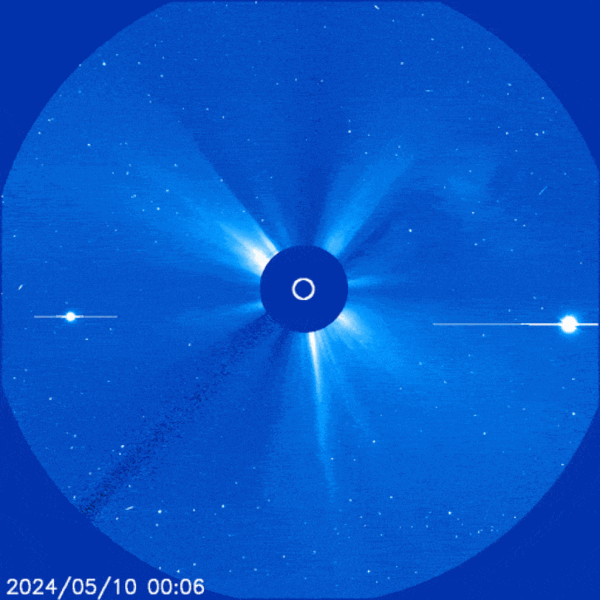Science
'Extreme' geomagnetic storm that painted Earth with auroras this weekend was the most powerful in 21 years
Earth has just experienced its most powerful geomagnetic storm in more than 20 years after a series of solar storms smashed into our planet. The extraordinary event triggered vibrant aurora displays as far south as Florida and caused power grid irregularities as well as temporary satellite issues.
The prolonged disturbance to Earth's magnetic field, which lasted from Friday (May 10) to the early hours of Monday (May 13), started when at least five solar storms, known as coronal mass ejections (CMEs), slammed into our planet's protective field one after the other. These CMEs were launched into space last week by solar flares from a single, massive sunspot, named AR3664, which is more than 15 times wider than Earth. A majority of these flares were X-class — the most powerful type of surface explosions the sun is capable of producing.
The CME bombardment temporarily weakened Earth's protective field, which enabled charged particles from the sun to penetrate deep into the atmosphere and excite molecules of gas. These in turn triggered vibrant, multicolored auroras at latitudes much farther from Earth's polar regions than normal. In the Northern Hemisphere, auroras lit up the skies as far south as Florida, Mexico and Puerto Rico, as well as across parts of Europe, according to Spaceweather.com. Similar light shows were also spotted at equally unusual latitudes in the Southern Hemisphere.
Scientists at the National Oceanic and Atmospheric Administration's Space Weather Prediction Center (SWPC) had forecast that the storm would be a "severe" G4 disturbance — the second-highest class of geomagnetic storms. However, the disturbance exceeded initial expectations and briefly reached "extreme" G5 status at least twice over the weekend, firstly on May 10 and again on May 11, according to SWPC statements. This is the same category as the infamous Carrington Event of 1859 and is the first time Earth has experienced G5 conditions since the Great Halloween storms of 2003.
In theory, G5 storms can send satellites tumbling to Earth, damage ground-based infrastructure and knock out power grids. However, in this case, the worst effects seem to have been some minor "power grid irregularities" and temporary disruptions to GPS and other satellite services, according to the SWPC.
Related: Aurora photos: Stunning northern lights glisten after biggest geomagnetic storm in 21 years

G5-class storms are rare but are more likely to occur during solar maximum — the most active phase of the sun's roughly 11-year solar cycle. Scientists can't pinpoint exactly when this period begins in real time, but several experts believe we have already entered solar maximum.
-

 Science3d ago
Science3d agoInside Capitol Hill’s Latest UFO Hearings
-

 Science3d ago
Science3d agoYou Won’t Want to Miss the Leonid Meteor Shower. Here’s How and When You Can See It
-

 Science4d ago
Science4d agoHere’s What Trump’s Win Means for NASA
-

 Science1w ago
Science1w agoWhy Risky Wildfire Zones Have Been Increasing Around the World
-

 Science1w ago
Science1w agoIt’s Time to Redefine What a Megafire Is in the Climate Change Era
-

 Science1w ago
Science1w ago4 Astronauts Return to Earth After Being Delayed by Boeing’s Capsule Trouble and Hurricane Milton
-

 Science1w ago
Science1w agoThe Elegance and Awkwardness of NASA’s New Moon Suit, Designed by Axiom and Prada
-

 Science2w ago
Science2w agoSpaceX Launches Its Mega Starship Rocket. This Time, Mechanical Arms Catch It at Landing



























